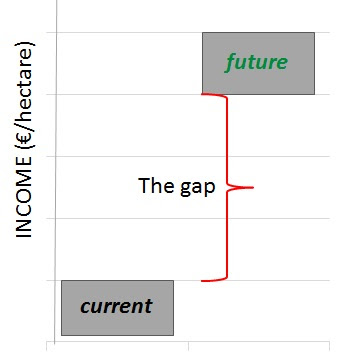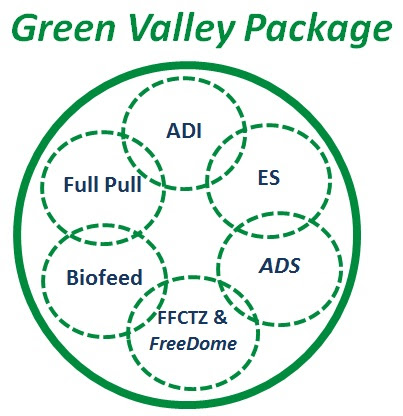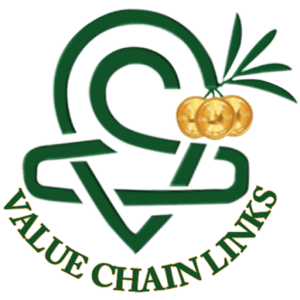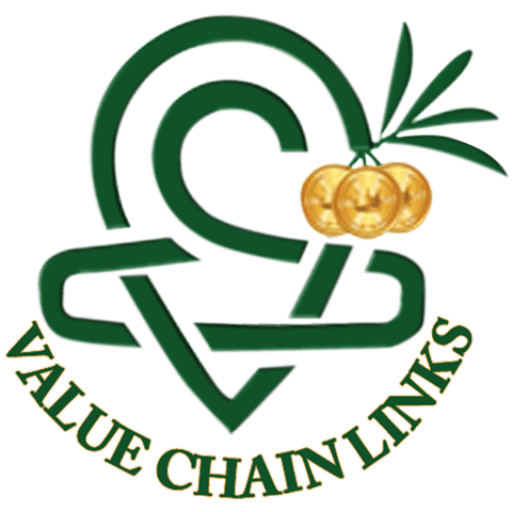IS THERE A SINGLE SOLUTION THAT WILL BOOST AGRICULTURE IN EMERGING ECONOMIES?

by Dr. NIMROD

“New challenges require new tools.“
| *in my articles, I address general phenomena. Mention of a country/continent is for illustration purposes only. |
INSIGHTS
I am thankful when I get an insight that helps me improve my understanding and hence my deeds at some point of a long journey.
As a technology-oriented scientist and business person, I was used to looking for a technological solution, no matter what the problem is.
I used to think in terms of; “for any problem, there is a technological solution.”
Hence, for many years it was evident that if only we had the right technologies, we could right away solve the agro-industry problems of the emerging economies.
But the more I met farmers, agro-experts, distributors, exporters/importers, traders, ministers, policy-makers, etc., the more I got the feeling that in the race of catching up with the developed economies, technology is only one of many aspects of the immense challenge those countries, and their farmers, are facing.
That insight that technology is over-rated as THE SOLUTION for the troubles of emerging economies came to me after nearly five years, dozens of trips, hundreds of farm visits worldwide, and a long time working on agro-technological solutions for the fruit industry.
I concluded that “although technology is an important factor, it is not sufficient to bring the needed change.”
I also observed that the value chain in emerging economies is practically broken, and sometimes entire pieces are missing.
From this, I understood that no single technology, no single piece of knowledge, no single model, or protocol, or method could do the desired change in the emerging economies and bring the result that everybody wishes to see.
I then asked, “Why doesn’t the agro-industry in emerging countries perform well?”
I received many different answers, many of which related to political issues. I am not a politician, and so it wasn’t helpful for me.
Being practical, I then asked a far more direct and precise question;
“what do the farmers and the value chain partners in emerging economies need to generate a high-value, high quality, high volume export crop (e.g., mango) industry?“
Once again, I received many answers, but the macro-answer seemed to revolve around a few coupled topics.

Fields and topics which seem to be highly challenging and common for the mango export value chain (including farmers) in the emerging economies. The fruit fly problem is standing out as a fundamental GO / NO GO criteria for the mango export industry.
Another insight involved the understanding that there is a single root-problem, which is the inability to manage fruit flies adequately.
This Primary problem is followed by many other issues, which we can call Secondary, even if their impact will become immense once we solve the Primary root problem.
It was clear that once we get over the root-problem, many secondary problems are awaiting.
To bring a change and success, we will have to face those secondary problems and give them better answers than offered until now.
Having that perspective, it made complete sense why no one is dealing with the secondary problems, as long as the root-problem inconceivable impact continues.
THE PACKAGE CONCEPT
I finally got it. Even when the people are great and the land and the weather, to bring the better future that the country, the farmers, and the entire value chain wish to see, we will need to do things differently.
But is there a way to quantify the economic impact of the change required?
Yes.

We quantify the necessary change by measuring the yield per hectare, the quality of the produce, and, finally and most importantly, by measuring the crop’s value and the profit per hectare.
For example, a typical African mango grower is having a yield of 3 to 10 tons/ha., the quality of his produce is low (e.g., high fruit fly infestation), and the value of his crop would be 200 to 2,000 €/ha. He is also limited to harvest up until the rainy season.
At the same time, advanced Israeli mango growers can have a yield of 40 to 60 tons/Ha., most of which is Export Quality, and a value of produce over 30,000 €/Ha.
In the fresh mango export industry, this is the gap we need to bridge, and it is measurable – 10 to 25 additional €/ha.
If we continue using the same methods, protocols, models, technologies, practices, concepts, and in general, the same Tools we used until today, we will get the same results.
 |
We need to use NEW TOOLS to create a NEW TOMORROW.
To bridge the agro-industry gap, we will need to apply many Tools to bring many changes simultaneously.
All those changes are related to –
(1) Enabling access to resources, e.g., funds, technology, know-how, protocols, models, etc.,
(2) Continuously provide human support by top experts, and
(3) Reinforce trust among parties in the value chain
 |
| So many things matter, but those three pillars seems to capture it all. |
In my eyes, all the above meant one thing only; farmers and the value chain in emerging economies need a PACKAGE that will include the necessary elements to make the change.
Since not all farmers and not all value chains are similar or have the same needs, this Package will have to be flexible enough to adapt to varying situations.
This Package should be like a “Tool Box,” where you can easily pull out the Right Tool for a particular situation and instantly apply it to get the desired result.
When I say “Tool Box,” I refer to in-depth field-tested and proven Tools, such as methods, procedures, protocols, models, technologies, services, experts, etc.
Today it is nearly impossible for a farmer in Africa or Asia to get a hold of all or even most of the Tools that should be part of that Package.
Try to imagine what it will be like if African, Asian and other farmers, and value chain partners could get the best technology, models, protocols, knowledge, methods, etc., and all that without spending more money than they do today!
And one more thing, I wanted to make those Tools easy to reach, accessible, and affordable to farmers and value chain partners in emerging economies.
This was when we decided to create Green Valley, with a purpose to bridge the agricultural gap through the use of a set of Tools brought to the farmers in a Single Package.
Therefore, the professional aim of the Green Valley Package is to help farmers grow a high quantity of high quality produce, which later can be marketed under the Green Valley brand to fetch a premium price.
The Green Valley Package contains many elements (e.g., models, protocols, etc.); each has its name, as presented below.
THE BUSINESS MODEL
THE MARKET – We dedicate Green Valley fruits to people who care about social, environmental, and health values. Such people would love to consume spray-free fruits from emerging economies, even for a somewhat higher price.
THE BENEFICIARIES – farmers and value chain partners in emerging economies who can or wish to export fresh produce to premium markets but currently (due to different reasons) struggle or can’t hold that position.
Today, those farmers lose a lot of produce because of fruit flies. Besides, their yield and overall produce quality are low, they suffer from limited access to premium markets, and hence, their business is underperforming. Often the result is increased poverty.
GREEN VALLEY BUSINESS MODEL – thanks to understanding consumers’ demands (The Market), as part of a long-term investment engagement, Green Valley‘s professional mission is to betterment the value of produce per hectare.
When this takes place, the farmer and the value chain partners enjoy improved profit results.
This is be done by investing in the farmer and providing him access to the Green Valley Package. In return, the farmer commits to market his produce through Green Valley channels (which can include his current channels), with an agreed commission.
For instance, let’s think of a farmer who is doing his best and having a current income of 10,000 €/Ha. This farmer currently, due to fruit fly problems, exports only 50% of his produce.
After examining and analyzing his business, Green Valley may decide that he has good potential to increase his income to 30,000 €/ha. Yes, by three times, or 300%!
To make this jump in income, the farmer will need to (a) decrease the fruit fly infestation to well below 1%, (b) increase several parameters of produce quality, (c) elevate the yield by 150%, and (d) find better markets to his produce that (e) will pay a premium of additional 20% on his current price.
In such a case, Green Valley will sign an agreement with the farmer and then tailor a Package to suit his specific needs.
On the farmer’s side, he will probably pay 20% to 65% in advance for the services and solutions provided through the Green Valley Package.
Green Valley will be carrying the business risk until the fruit is sold.
OTHER ASPECTS
Green Valley is a business-oriented operation, which, in addition to doing profitable business, is obliged to promote its social, environmental, and health values agenda by creating advanced agro-industry in emerging economies.
To fulfill its mission and achieve its goals, Green Valley acts as a platform enabling farmers and other value chain partners easy access to a Package of top services, technologies, know-how, protocols, models, funds, etc.
Value chain partners, including farmers, can benefit from using the Green Valley Package by letting Green Valley’s team understand their needs, problems, and goals.
Green Valley team will then provide the best-customized solutions to enable them to reach their goals.
Green Valley will gladly cooperate with farmers and value chain partners, as long as they act in light of its values and align with its long-term business model and goals.
Once you are a value chain partner, you will have access to Green Valley’s FULL PACKAGE to support your activities to increase your profit.
THE PACKAGE CONTENT
With a list of challenges, problems, obstacles, regulatory requirements, risks, etc., in hand, we started designing a game-changing fruit export-oriented set of solutions.
This, to provide useful and professional solutions to the parties composing the value chain.
The result is a set of well-defined models, protocols, and services; each provides a solution to one or more of the issues the parties of the value chain need to cope with.
By solving painful problems, each solution is like a step opening a wider door into a better future.
Following is a list of the principle protocol, technologies, services, and models used as part of the Green Valley Package:
FFCTZ – Fruit Fly Certified Trade Zone protocol provides a standard System Approach solution for farms oriented to export high-quality produce.
Thanks to FFCTZ high inherent standards, farmers acting under this protocol will likely continue exporting even if other farmers in the country are under an export ban.
FFCTZ is a crop protection breakthrough protocol that reduces fruit fly infestation in a delimited area to a low rate that perfectly suits the requirements of highly demanding premium export markets.
FreeDome – is a fruit fly spray-free novel control technology exclusively used by Green Valley partners as the cornerstone of the FFCTZ protocol.
ES – Experts’ Support is a service model for providing support from experts. Those services are necessary to increase the value of produce per hectare.
Experts’ Support is provided throughout the value chain, including improving farming activities, increasing yield, improving produce quality, improving eco-friendly crop protection, packinghouse, logistics, regulatory affairs, export, etc.
AVS – Added Value Services is a service model, which creates a strategic advantage for produce (fruit) marketed under the Green Valley brand.
Such activities include creating strategic partnership alliances and agreements, marketing to premium customers, branding, PR, and publicity activities on social media/platforms that interact with the end consumer to create consumer demand for Green Valley labeled fruits.
Biofeed – is an R&D powerhouse of technologies (IP) and tools used by Green Valley.
In this context, Biofeed is acting as the provider of solutions for fruit flies and other pests that may adversely affect farmers’ ability to export through Green Valley.
Such solutions will preferably not involve sprays or discharge of chemicals into the environment.
Full Pull Investment – the model offers the farmer 35% to 80% funding for solutions provided through the Green Valley Package.
For investors, this is an opportunity to safely invest in the Green Valley long term profitable operation.
ADI – the Agri-Development Investment model is used for managing the value chain to work in harmony to bring the desired results to all the value chain parties’.
From the farmer’s perspective, he can focus on doing what he knows the best, which is growing the best produce, while Green Valley ADI will make all the rest of the business connection and management for him.

The Green Valley Package offers a combined solution to the main problems, challenges, and risks that farmers and value chain parties, including investors, are facing when operating in emerging economies.

As a result of its activity, Green Valley aims to upgrade the local agro-industry and put it in motion. Hence, the entire value chain will generate a more significant positive value.
By doing so, in line with its values, Green Valley increases the wealth of farmers in emerging markets and enables them a better life and a future of prosperity.
Simultaneously, it enables governments to save on financial support for populations based on agriculture while increasing fresh fruits export and bringing foreign currency that the country desperately needs.
EXAMPLE
For reasons of business focus, Green Valley starts its activity by focusing on the mango industry in Africa, followed by Asia.
In the following example, we see how a typical mango grower in Africa or Asia can enjoy the Green Valley Package’s many benefits.
Let’s look at the business of the mango grower through his eyes. We will start with his challenges, problems, limitations, and risks.
1. A fear of EXPORT BAN, or a need to uplift the EXPORT BAN.
2. Fruit fly infestation causing 30% to 80% crop loss.
3. Current ineffective fruit fly control.
4. Need for an effective fruit fly Systemic Approach protocol.
5. Short harvest season (up until the rainy season).
6. Need for professional services to ensure compliance with phytosanitary regulatory requirements.
7. Need to export produce free of chemical and free of pests.
8. Need for an effective non-spray fruit fly control technology.
9. Need to re-open or increase the national fresh mango exports.
10. Initiate or improve access to premium markets.
11. Produce quality problems – need to improve the fruits’ quality: before harvest, in harvest, and after harvest to meet premium market demands for “premium and taste.”
12. Low yield problems (need to increase the yield).
13. Need to improve irrigation.
14. Need to improve the use of fertilizers.
15. Need to improve tree training and pruning.
16. Need for professionals’ and experts’ field support.
17. Need to increase the profit per kg.
18. Ongoing financing.
19. Funding for expansion and growth.
20. Need for pre-harvest financing of activities.
21. Managing relationships with service providers; financing, know-how, products, technologies, certifications, etc.
The list above, albeit partial, presents some of the most painful and urgent issues in the farmer’s eyes.
Thanks to Green Valley Package, such a farmer will get a working solution to ALL of the above concerns and many more.
Now, let’s look through Green Valley‘s eyes to see how it assigns solutions to the farmer’s needs and concerns.
The FFCTZ protocol, and FreeDome as part of it, will deal with the farmer’s concerns regarding the export ban, fruit loss, fruit fly control, required System Approach protocol, chemical residues, and extension of the harvesting season (paragraphs 1 to 9).
The Experts’ Support (ES) service will support improving and getting over the tasks that require in-depth expertise, such as access to premium markets, enhance the quality of fruit from the tree to the consumer, increase yield, improve irrigation and use of fertilizers, etc., (paragraphs 10 to 16).
The Added Value Services (AVS) will focus on increasing the value of the produce (paragraph 17) while being involved with many of the other issues affecting quality parameters.
The Full Pull investment model will support the farmer to finance the use of the most advanced services, protocols, technologies, etc., in a way that fits best his needs and capabilities. Concerns all paragraphs.
The Agri-Development Investment (ADI) model, by its nature, will help the farmer to understand better his needs and how Green Valley can best support him in reaching his goals. Concerns all paragraphs.
IMPORTANT, it may look complicated, but from the farmer’s point of view, all the above is transparent!
The farmer will be in contact with a single person. Together they will decide on the way forward, and only then will the farmer start seeing and meeting the providers of the various services, protocols, technologies, etc.
I conclude with the above example. One can see how agricultural development can be accelerated in emerging markets when working to create an alliance of interests within a structured, simple, and tailored model.
Green Valley brings a fresh breeze to districts that need it more than anywhere else in the world.
If you would like to participate by investing, exporting, etc., within the mango export value chain to enhance Africa’s agro-industry and other emerging markets, please contact me to consider your opportunities.

